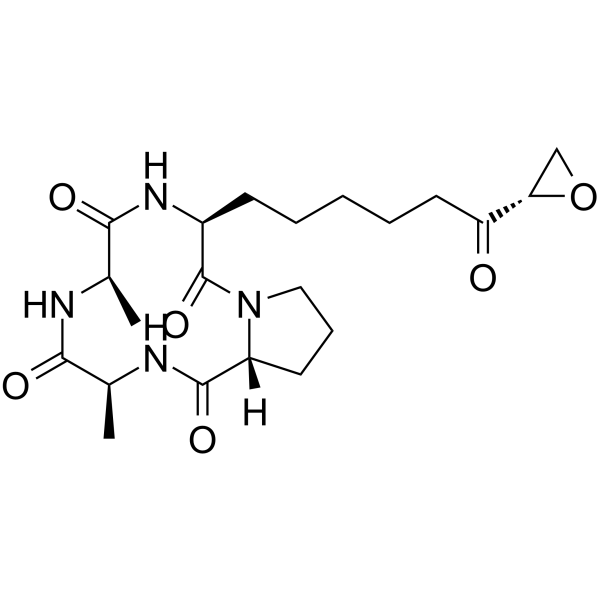Anti-neuroblastoma activity of Helminthosporium carbonum (HC)-toxin is superior to that of other differentiating compounds in vitro.
Hedwig E Deubzer, Volker Ehemann, Andreas E Kulozik, Frank Westermann, Larissa Savelyeva, Annette Kopp-Schneider, Daniel Riester, Manfred Schwab, Olaf Witt
Index: Cancer Lett. 264(1) , 21-8, (2008)
Full Text: HTML
Abstract
Treatment of high-risk neuroblastoma (NB) is difficult. Novel therapeutics improving survival rates are urgently required. We have previously shown that the histone deacetylase inhibitor (HDACI) Helminthosporium carbonum (HC)-toxin induces differentiation of neuroblastoma (NB) cells. Here, we show that HC-toxin inhibits the growth of both established NB cell lines and primary cultures with and without amplified MYCN stronger than retinoids (RAs) and other HDACIs (MS-275, n-butyric acid, suberoylanilide hydroxamic acid, trichostatin A, valproic acid). Nanomolar dosages suppress E2F-1, N-myc, Skp2, Mad2 and survivin proteins, found at high levels in high-risk NBs, more efficiently than both RAs and other HDACIs. The level of hypophosphorylated active retinoblastoma (RB) tumor suppressor protein is increased most effectively. HC-toxin's epoxy group is essential for inhibiting HDACs and promoting anti-NB activity. Without this functional group, those cellular effects are not observed. In conclusion, the anti-NB activity of HC-toxin is superior to that of RAs and that of all other HDACIs tested.
Related Compounds
| Structure | Name/CAS No. | Molecular Formula | Articles |
|---|---|---|---|
 |
HC Toxin
CAS:83209-65-8 |
C21H32N4O6 |
|
Expression of 15-lipoxygenase-1 is regulated by histone acet...
2001-01-01 [Carcinogenesis 22(1) , 187-91, (2001)] |
|
A putative branched-chain-amino-acid transaminase gene requi...
2014-03-01 [Microbiology 145 ( Pt 12) , 3539-46, (1999)] |
|
Regulation of cyclic peptide biosynthesis in a plant pathoge...
2001-11-20 [Proc. Natl. Acad. Sci. U. S. A. 98(24) , 14174-9, (2001)] |
|
An extended physical map of the TOX2 locus of Cochliobolus c...
2002-02-01 [Fungal Genet. Biol. 35(1) , 31-8, (2002)] |
|
Reduced virulence caused by meiotic instability of the TOX2 ...
2000-01-01 [Mol. Plant Microbe Interact. 13(1) , 80-7, (2000)] |